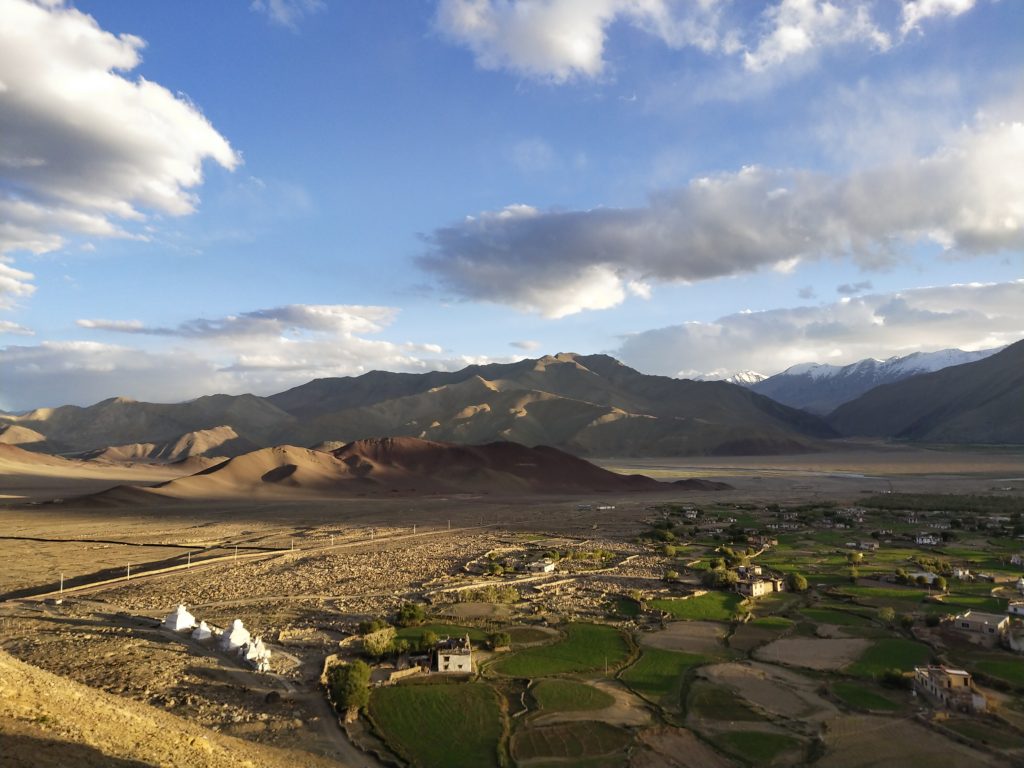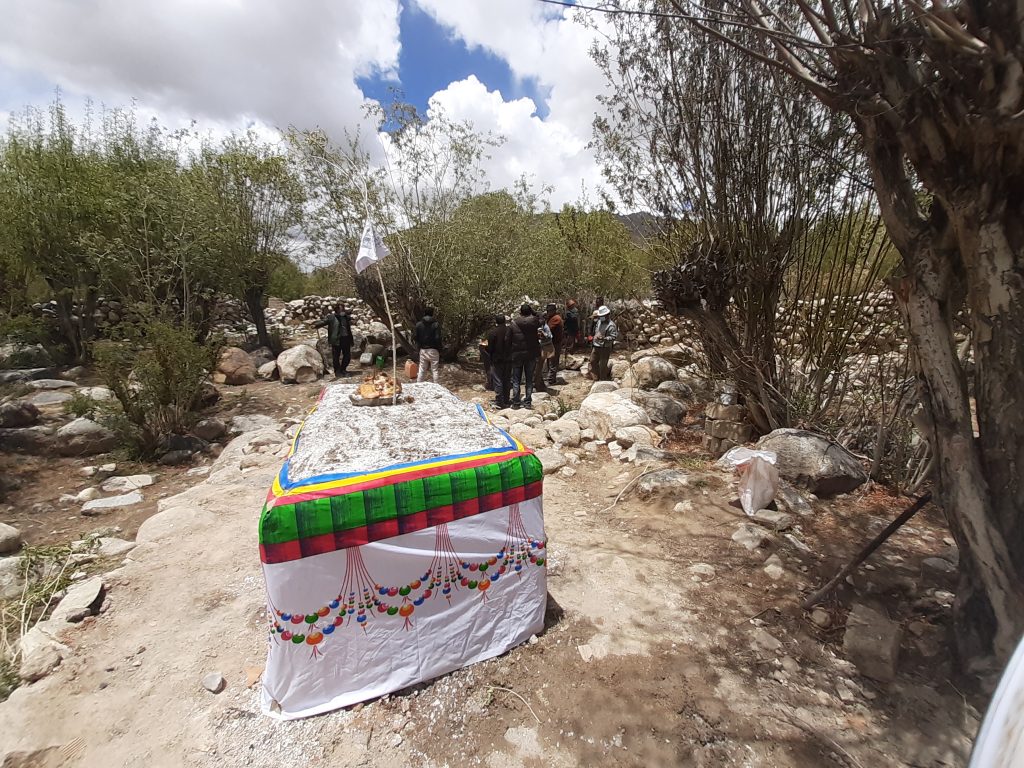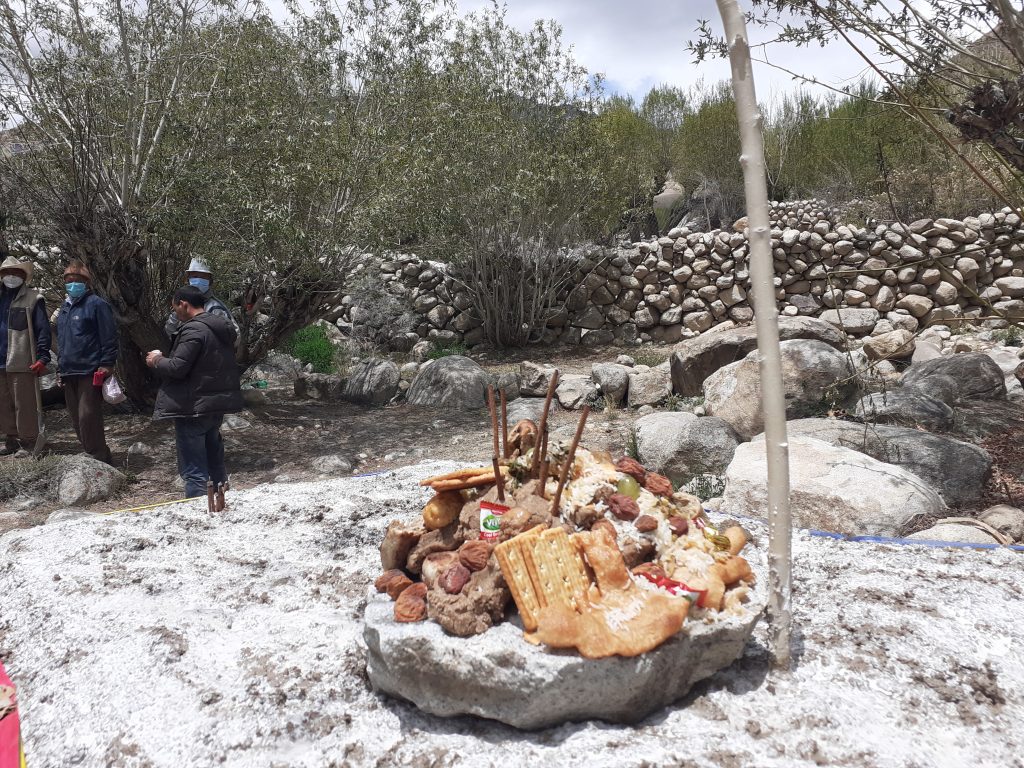Relearning to live with ghosts
Kayi, Kayi; Sardak na Doa-dak. “The owners of the land and the rocks, please accept our food”. Kayi is an odd and old pronunciation of the Urdu word Khao, meaning eat. Sardak is composed of two words, sa (land) and dakpo/mo owners of the rocks. Doa is rock.
The word sardak means much more than the English ‘owner of land’; The roots of the word, with their tentacles, meander and take us to the first person (the original sardak of a household) who established the first farm, which gave him/her the food. The farm that led to the formation of his/her household. The household members created the first romkhang; the place where the dead person’s body was burnt to convert it back to soil and rocks. The following generations also converted to dust in the same romkhang. Siblings parted ways and the number of households grew; new romkhangs were made. The new, however, must have a handful of the soil of the original romkhang. So all the people who found a place in the romkhang are dakpos; owners of the land (sardak).
Romkhang, is an odd word. It means the house (khang) of the dead body (ro). But the body is not just a body; it also is soil/land. Dust in any romkhang is a mixture of the bodies of the ancestors. I write this sitting in a house not far from our romkhang. The romkhang is located amidst stones, rocks and willow trees. In the high altitude, trees have to be cultivated for fuel and to build houses. These trees were planted by my grandfather, one of the later sardaks. His name was Tundup Paljor, who died in the 1980s, much before I arrived in human form. Paljor’s wife Tashi Chuskit and his two sisters, both named Zangmo co-worked to plant those trees. The soil in our romkhang also contains the body of my women ancestors. The grove of trees, a feature of the village landscape, owes their existence to them.
If I zoom out of the grove, I see terraced farms created and tree gardens planted by the sardaks of other households. The landscape from this vantage point had been indelibly marked by the presence of the sardaks. The farms, the trees, the old houses, the repaired monasteries, the crumbling stupas, the foot trails, the wooden bridges, the lhatos (the residences of benign spirits) and others were created by the sardaks. They and their livestock left trails. This landscape reminds me of our ancestors. They are absent but present, they are like ghosts. The ghosts of sardaks populate the landscape.
Zooming out further, we see that the T-shaped valley in which my village is located is surrounded by majestic mountains, formed 50 million years ago when two tectonic plates collided. In this landscape, the humans showed up much later. Yet the insignificant humans have marked significant marks on the landscape. The sardaks brought water via irrigation canals from the stream fed by the Shali Kangri glacier to their trees and farms. The ways of being of the sardaks enabled them to live here for thousands of years.
The landscape was constantly in the making. It still is. New houses built from imported cement, iron, wood, and paints are prevalent. Now, the three ends of the T-shaped valley are paved with motorable roads. All roads connect the village to the national highway and thereby to circuits of the global economy. The western side is fenced by the iron net to stop napos, a wild ungulate, from entering cultivated fields. Villagers opine that the lack of grass in wild pastures is the reason for their invasion, which in turn points to low snowfall in the winters. Metal fencing is supposed to be the defence against a changing climate. We are told that the glaciers in the Himalayas are melting quickly because of the settling of black soot on the ice sheets. One of the sources of soot are diesel engines. The imported cement and metals are implicated in the decreasing size of the glaciers. Two villages in Ladakh, Kumik and Kulum have had to be abandoned because their glaciers melted and springs dried up. Now, only ghosts live in these villages. The concrete houses, behemoth hotels, and metal fences are also haunted. The ghosts of past ways, with their human limitations, haunt these places. The ghosts are everywhere, if only we could learn to see.
Back to the romkhang, during Losar (Ladakh’s New Year) festivities, the living members of the household take food for the sardaks at romkhangs. It is during this time that in the Sham region of Ladakh these words are uttered: Kayi, kayi; sardak na doa-dak. Please accept our food. This practice is called sheme. Sheme is a reminder of the legacy of those who lived before us. I had never seen Tundup Paljor, but as a child, I took food for him and his other roommates.The modern encroachment of dualisms – of body/soil, life/death, subject (I)/object (landscape) – are destroying practices like sheme and blindfolding us to notice the connections and co-origination of everything. With the connections hidden, our landscape exists out-there to be gazed upon (by tourists) and to be tamed (by engineers and contractors) and so on. The real blind faith is to render the landscape dead. Opposed to bland, dead and feminised landscape, waiting to be tamed, sheme illuminates and enchants with magic, with ghosts. It invites us to relearn other ways of looking. It reveals the living history of our land via the ghosts of the ancestors, the sardaks.
This piece of writing was inspired by the work of Donna Haraway, Tim Ingold, Anna Tsing and native scholars.





This work is licensed under a Creative Commons Attribution-NonCommercial-ShareAlike 4.0 International License.


